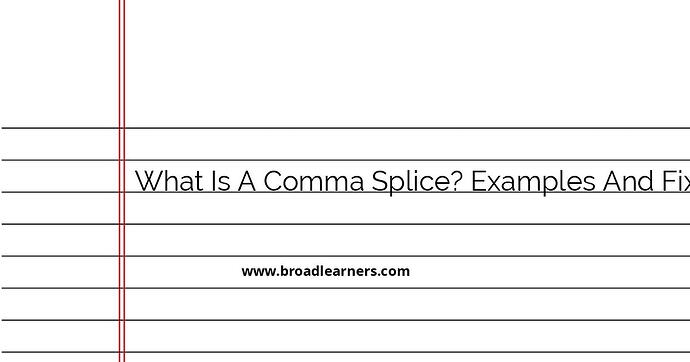A comma splice is a grammatical error that occurs when two independent clauses (i.e., complete sentences) are joined together only with a comma, without any conjunction or proper punctuation. This mistake creates confusion for the reader and disrupts the flow of the text.
Let's look at some examples of comma splices and how to fix them:
1. Example of a Comma Splice:
Incorrect: I finished my work early, I decided to go for a walk.
Explanation: In this example, there are two independent clauses 'I finished my work early' and 'I decided to go for a walk' connected by a comma only.
Fix: You can correct this comma splice by adding a coordinating conjunction like 'and' or 'so' or by using a semicolon.
Corrected: I finished my work early, so I decided to go for a walk.
Corrected: I finished my work early; I decided to go for a walk.
2. Example of a Comma Splice:
Incorrect: She sings beautifully, her voice is mesmerizing.
Explanation: This sentence contains the independent clauses 'She sings beautifully' and 'her voice is mesmerizing' separated by a comma.
Fix: To repair the comma splice, you can use a semicolon, a period to create two separate sentences, or add a coordinating conjunction.
Corrected: She sings beautifully; her voice is mesmerizing.
Corrected: She sings beautifully. Her voice is mesmerizing.
Corrected: She sings beautifully, and her voice is mesmerizing.
Remember, to avoid comma splices, make sure to either use a semicolon to connect two closely related independent clauses or employ coordinating conjunctions like 'and,' 'but,' 'or,' 'so,' or 'yet' to join them properly.
Did I miss anything? Respond below
